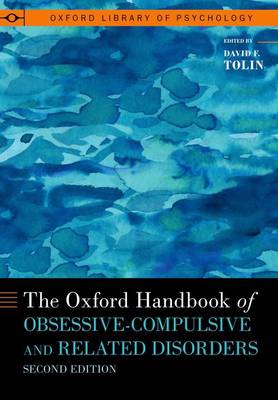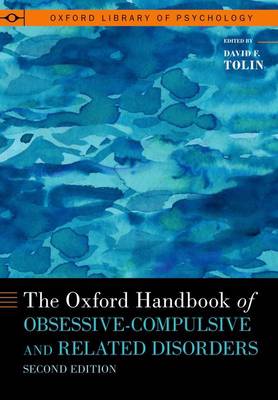
- Afhalen na 1 uur in een winkel met voorraad
- Gratis thuislevering in België vanaf € 30
- Ruim aanbod met 7 miljoen producten
- Afhalen na 1 uur in een winkel met voorraad
- Gratis thuislevering in België vanaf € 30
- Ruim aanbod met 7 miljoen producten
Zoeken
The Oxford Handbook of Obsessive-Compulsive and Related Disorders
David F Tolin
€ 265,95
+ 531 punten
Omschrijving
With the publication of the Diagnostic and Statistical Manual of Mental Disorders, 5th Edition (DSM-5), much has changed about the conceptualization of obsessive-compulsive disorder and its associated spectrum conditions. Breaking free from the previous category of anxiety disorders, a new diagnostic category of "obsessive-compulsive and related disorders" (ORCDs) has emerged. This new categorization has provided an opportunity to enhance our understanding of these unique disorders and to address new research questions. The second edition of The Oxford Handbook of Obsessive-Compulsive and Related Disorders presents the latest information, from leaders in the field about the epidemiology, phenomenology, assessment, and treatment of ORCDs. The volume begins by reviewing the prevalence and profiles of obsessive-compulsive disorder, body dysmorphic disorder, hoarding disorder, trichotillomania (hair-pulling disorder), and excoriation (skin-picking) disorder. Chapter authors then discuss modern conceptualizations of the OCRDs, including neurocircuitry, genetic, behavioral, and cognitive models. From here, assessment strategies are reviewed, followed by state-of-the-science biological and psychological treatments, including pharmacotherapy, neurosurgical strategies, behavioral therapies, and cognitive therapies. Finally, the volume examines the presentation and treatment of OCRDs across cultures as well as in special populations including children and older adults.
Specificaties
Betrokkenen
- Auteur(s):
- Uitgeverij:
Inhoud
- Aantal bladzijden:
- 792
- Taal:
- Engels
- Reeks:
Eigenschappen
- Productcode (EAN):
- 9780190068752
- Verschijningsdatum:
- 15/09/2023
- Uitvoering:
- Hardcover
- Formaat:
- Genaaid
- Afmetingen:
- 188 mm x 244 mm
- Gewicht:
- 1519 g

Alleen bij Standaard Boekhandel
+ 531 punten op je klantenkaart van Standaard Boekhandel
Beoordelingen
We publiceren alleen reviews die voldoen aan de voorwaarden voor reviews. Bekijk onze voorwaarden voor reviews.











